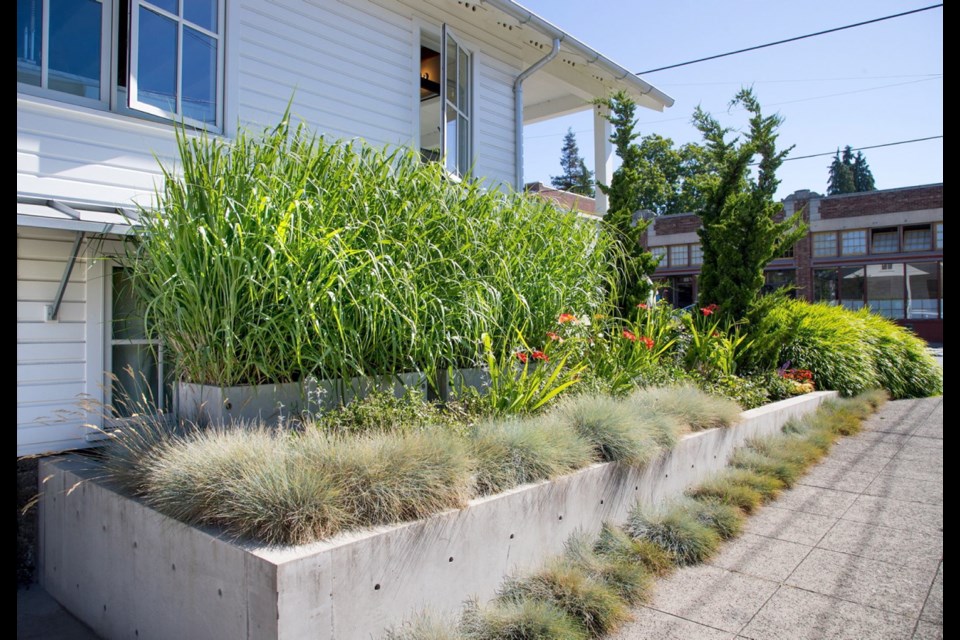SEATTLE ŌĆö When you upend your life, there likely will be questions. Twins Melinda Lloyd and Mary Speckart posed the transformative first one ŌĆö a biggie ŌĆö themselves.
ŌĆ£Melinda lived on Mercer Island, and I lived in Kirkland,ŌĆØ says Speckart.
ŌĆ£Melinda was single since the death of her husband. I have been single because of divorce. We have a home on Lopez Island, too. It was really stupid for two people to have three houses. We said: ŌĆśWhy are we doing this?ŌĆÖ ŌĆØ
From there, other questions followed.
Speckart and Lloyd tinkered with the idea of sharing a home. They told Joe Schneider and Kim Clements of J.A.S. Design-Build (Kevin Price of J.A.S. had designed the sistersŌĆÖ Lopez home): ŌĆ£If you ever find a perfect house for us to downsize, let us know.ŌĆØ
Schneider and Clements presented potential ŌĆö right across the street from their office ŌĆö in the form of a sagging 1920s house that had sat empty and defenceless under invasion by icky syringes and greedy vegetation.
Perfection would take considerable tinkering.
ŌĆ£My first thought,ŌĆØ says Lloyd, ŌĆ£was: ŌĆśIŌĆÖm giving up Mercer Island for this?ŌĆÖ ŌĆØ
Yep. And Speckart gave up Kirkland. (They kept the Lopez home.)
And then they got down to work with J.A.S. designer Mike Freeman ŌĆö remodelling and re-imagining, but not razing.
ŌĆ£A lot of people would have said: ŌĆśKnock it down,ŌĆÖ ŌĆØ Freeman says. ŌĆ£We tend to prefer to use whatŌĆÖs there. There were lots of good materials to work with: first-growth fir, 800 years old ŌĆö you canŌĆÖt replicate that.ŌĆØ
Beams were salvaged, as were the front door and sliding windows. ŌĆ£For the most part, we kept the structure, the stuff you canŌĆÖt see,ŌĆØ he says. ŌĆ£One of the big tricks with a big, open kitchen/dining/office all in one is to not have any walls.
ŌĆ£To get to open space in here, which really did make sense, we retrofitted the entire front of the house into a truss system.ŌĆØ
ItŌĆÖs a critically efficient, light and lovely use of space in a home with not that much of it.
ŌĆ£They said: ŌĆśItŌĆÖs 1,000 square feet. Can you make it work?ŌĆÖ ŌĆØ says Lloyd.
It took some work ŌĆö and some introspection ŌĆö but, again: Yep.
ŌĆ£ItŌĆÖs surprising in living a life how much you amass,ŌĆØ Lloyd says. ŌĆ£You think: ŌĆśThat was a different time period ŌĆö IŌĆÖm evolved.ŌĆÖ I had lots of frilly things before.ŌĆØ
Adds Speckart: ŌĆ£We threw a lot of stuff away in our old households. Especially the repeats. We both have similar taste. We donated a lot.ŌĆØ
In the end, they saved what matters most: nostalgic things (a scale displayed on the storage wall separating the great room from the private wing ŌĆ£is the last thing my husband gave me,ŌĆØ Lloyd says).
Historic things (the clock at the end of the hall had hung in their familyŌĆÖs grocery store in Utah). Things they both love (blue-and-white porcelain). Things they both need (clothing).
The sisters share a closet. ItŌĆÖs not huge, but itŌĆÖs enough.
ŌĆ£People say: ŌĆśOh my God ŌĆö thatŌĆÖs all you have?ŌĆÖ ŌĆØ says Speckart. ŌĆ£We share clothes. That helps a lot.ŌĆØ
The closet opens at both ends, linking the twinsŌĆÖ bedrooms, which both have bumpouts and are almost exactly equally sized. (ŌĆ£Parity for the twins,ŌĆØ Freeman says).
The bedrooms are not huge, either. But they are enough.
ŌĆ£For a house thatŌĆÖs this size, why would we dedicate a whole lot of space for this area?ŌĆØ says Freeman. ŌĆ£The bedrooms are a place for a bed. TheyŌĆÖre comfortably large enough to get around a bed.ŌĆØ
Speckart responds with a question that answers itself: ŌĆ£What do I use a bedroom for? To sleep.ŌĆØ
Seattle author Marc Vassallo has included the twinsŌĆÖ home in his inspiring new book, Little House in the City: Living Small Within City Limits.
ItŌĆÖs not about ŌĆ£tiny houses.ŌĆØ ItŌĆÖs not about bashing big houses. ItŌĆÖs a celebration of 37 new/remodelled/even backyard houses, all under 1,800 square feet and all within the borders of 20 cities, from Toronto to Savannah.
ŌĆ£I call small city houses ŌĆśthe next little thing,ŌĆÖ ŌĆØ Vassallo says. ŌĆ£My editor and I agreed on one thing right from the start: This would be a fun book. It has points to make about the virtues (esthetic, philosophic, economic, practical and environmental) of small houses and city living. ItŌĆÖs aligned with several significant demographic and lifestyle trends, but above all, itŌĆÖs a fun book.ŌĆØ
His familyŌĆÖs own house is in there, too.
ŌĆ£My house in Seattle is small, just 950 square feet, but my home doesnŌĆÖt stop at the front porch or even at the front gate,ŌĆØ he writes.
ŌĆ£It includes sidewalk garden beds; the street; the neighbourhood; and the whole city, all near at hand.ŌĆØ
(Plus, two small ŌĆ£shed-studiosŌĆØ for storage, work, exercise, meditation, music ŌĆö basically, backyard bonus space.)
Speckart and LloydŌĆÖs bonus space includes a 550-square-foot lower-level accessory dwelling unit they rent out, a storage/exercise space they call ŌĆ£The Oyster RoomŌĆØ and a private, low-maintenance back patio.
And because the sisters love to cook and entertain, gatherings naturally spill out onto the broad and welcoming front porch, where, even on non-party days, Ella their dog ŌĆ£is our ambassador in the community,ŌĆØ Lloyd says.
ŌĆ£Everybody is really, really great with walking by and saying hi. We go out and sit with her.ŌĆØ
And therein lies a very fundamental answer to the making-a-small-space-work question.
ŌĆ£With a little city house, everything you need is decidedly not in your house,ŌĆØ Vassallo says. ŌĆ£Rather, youŌĆÖre allowing your neighbourhood and your city to become extensions of your home. This is something to celebrate.ŌĆØ
There are other things, too, he says: ŌĆ£the pleasures of living in a small house, the pleasures of living in a city, the pleasures of density and proximity, of walkable neighbourhoods, of neighbours and neighbourliness.
ŌĆ£The pleasures of smallness itself.ŌĆØ



